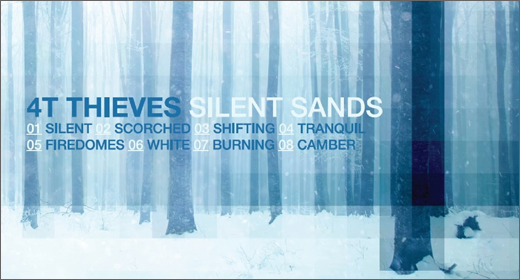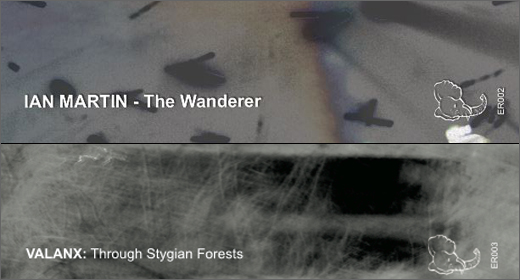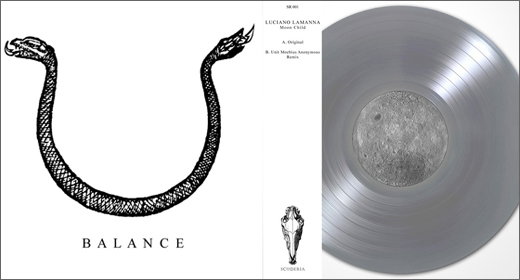Both are mysterious discs—looped, concrète, ambivalent, ambient and transportive.
No trainspotter I, but old steam engines still conjure romance for me, especially caked matt black with the grease and soot of their labor, from their juggernaut grimaces to the steel wheels and the giant piston and connecting rods that give them motion. On Señor Trainwhistle, The Sand Rays—actually one man, Jim DeJong, releasing on his old-new label CEIL—present a brief, three-part symphony of locomotion—a long, sputtering drone, a clicks’n’cuts clickety-clack of forward momentum with subtle texturing as the passing scene, and the far-off and getting further away song of the rails.
DeJong frames the piece (and its quickly-following companion, Escalator Attendant) in a context of Bizarro world Magrittisms—addressing us as “Jim the Younger” and “Jim the Elder,” respectively, we are told neither is a 7″ (they are in fact three-inch CDRs—two sides of the same, cancelled vinyl single?) and that The Sand Rays have “nothing to do with The Infant Cycle,” the name under which his generative, distressed oeuvre is most widely known. Identically designed, Escalator Attendant is credited to Ray Sands, who has “nothing to do with The Sand Rays.”
The latter opens with a shimmering, juddering piece reminiscent of New York minimalism, opening wider until slowly tumbling down the huge chasm that has opened under it. The second piece, “That Blurry Tunnel There,” if damp and clammy, is also smooth and narcotic.
Both are mysterious discs (five or six of The Infant Cycle’s releases are called A Mysterious Disc, but I am sure they have nothing to do with Ray Sands or the Sand Rays)—looped, concrète, ambivalent, ambient and transportive.
Both releases are available on CEIL.



















